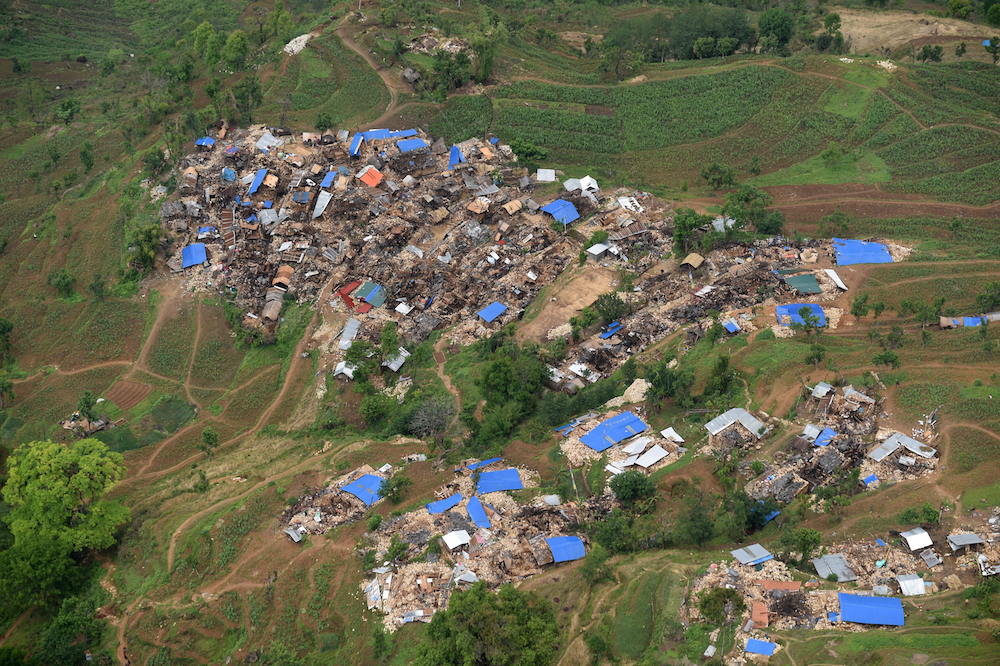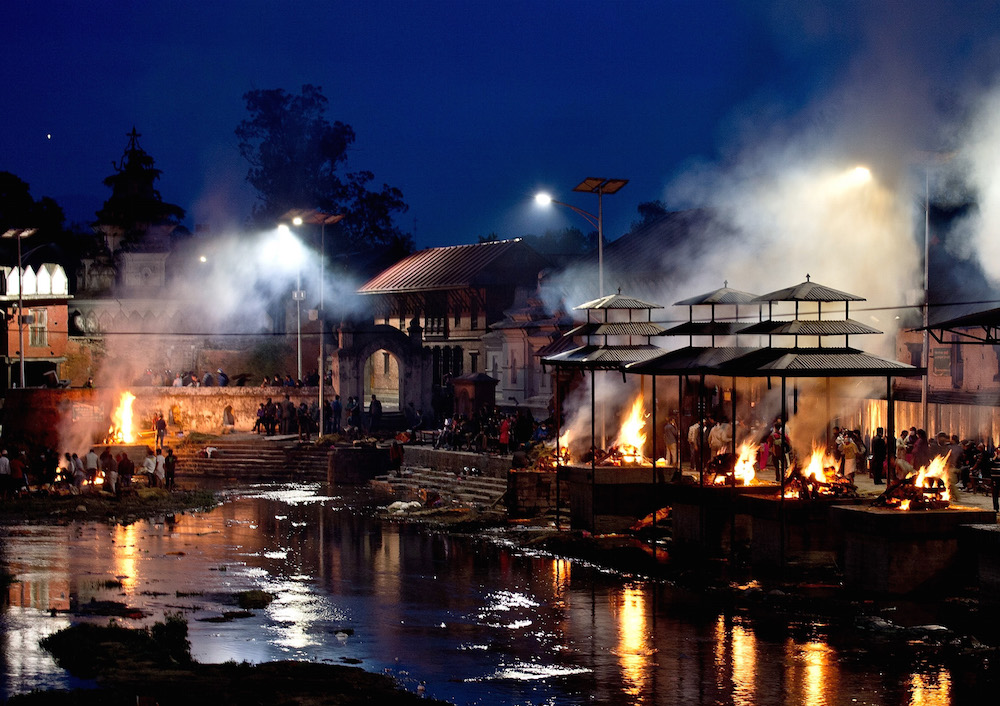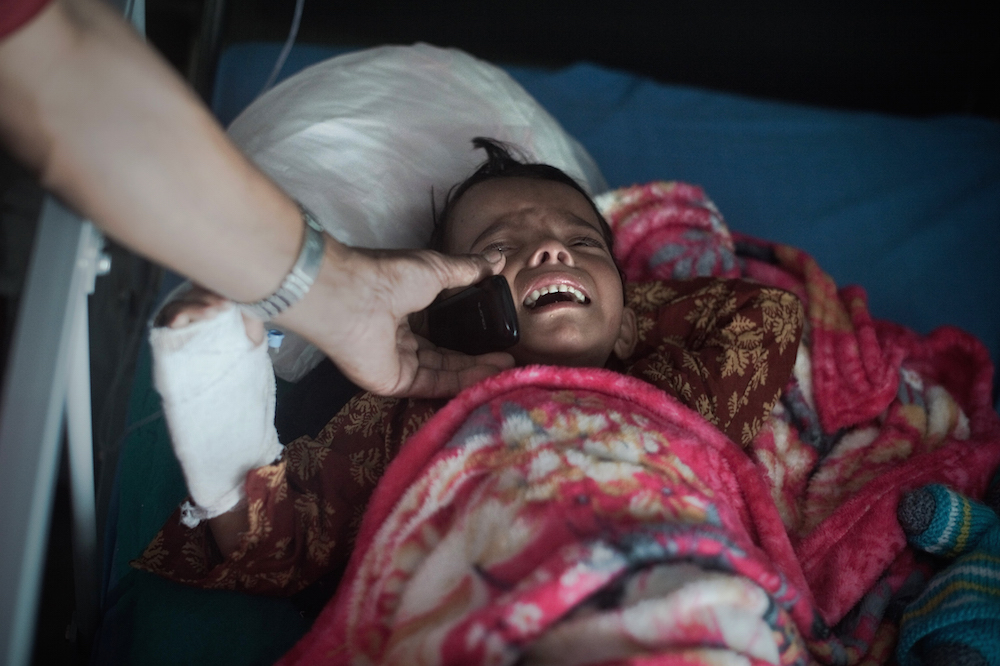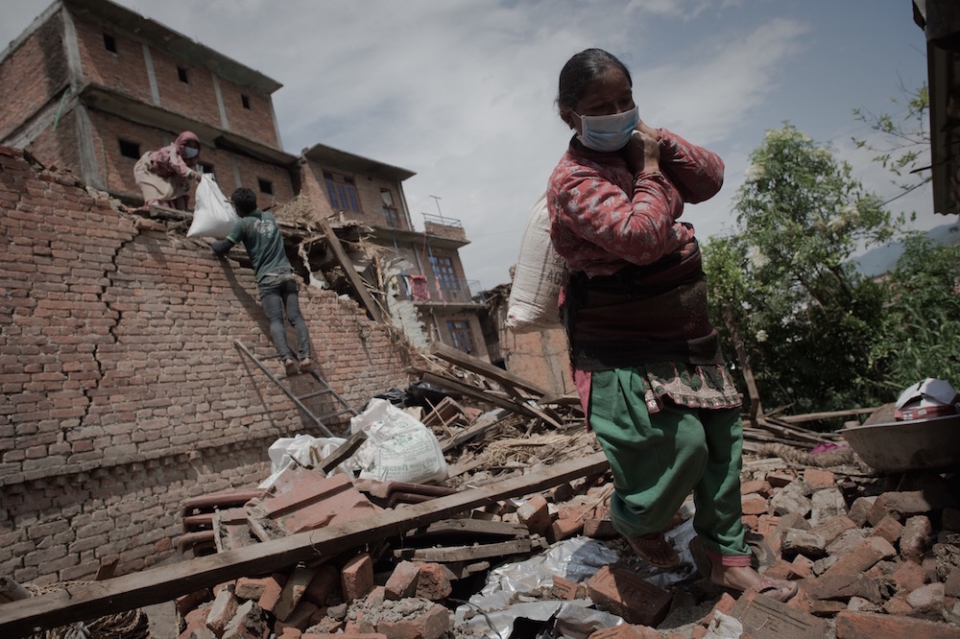The massive earthquake that hit Nepal April 25 is one of the country’s worst in 80 years. International teams of rescuers and medical experts are helping to hunt for and aid survivors, and at least two were rescued after five days. While the full cost in terms of lives lost and economic damage is yet unknown, this is how it could rank against other major quakes.
In terms of magnitude

Damaged houses are pictured from an Indian Army helicopter at Barpak village, in northern-central Gorkha district on April 29, 2015. Hungry and desperate villagers rushed towards relief helicopters in remote areas of Nepal, begging to be airlifted to safety, four days after a monster earthquake killed more than 5,000 people. AFP PHOTO / SAJJAD HUSSAIN
The earthquake released about 21 megatons of seismic energy — and lifted parts closest to the epicenter by at least a meter (3.3 feet).
Each whole-number increase on the earthquake magnitude scale, say a 6.0 earthquake to 7.0, is 10 times more powerful and releases 31.6 times more energy. Quakes that fall in the 6 range are described as ‘strong’, 7’s are ‘major’, and 8-plus are ‘great’. The largest earthquake ever recorded was a 9.5, which hit Chile in 1960.
Scientists estimate one of the largest magnitude events to happen on earth was an asteroid crashing into the Yucatan peninsula 65 million years ago, effectively wiping out the dinosaurs. That impact would have registered 13.0 on the Richter scale, releasing 100 teratons of seismic energy.

In terms of human lives lost

Funeral pyres burn during a mass cremation of earthquake victims on the banks of Bagmati river at the Pasupathinath temple in Kathmandu on April 29, 2015. The United Nations appealed for $415 million for Nepal, saying it urgently needs more funds to provide relief to people affected by a devastating earthquake. AFP PHOTO / MANAN VATSYAYANA
More than 5,800 to perhaps even tens of thousands lives were lost in the Nepal quake and many more were injured, according to the most recent figures available as of publishing. Andrew Revkin of The New York Times outlined the importance of estimates during recovery: “Such estimates are not just academic or morbid exercises. They can help focus emergency responses on areas where the greatest probability of destruction is calculated.”
Deadliest earthquakes over the last 100 years
Note: High-end estimates used. The Indian Ocean quake includes the resulting tsunami. If a range of magnitudes were listed, the median value was used. Data: governments, U.N., USAID.
The magnitude of an earthquake doesn’t have a direct correlation with the number of deaths it causes. The 2010 earthquake in Haiti, for example, was only a 7.0, but resulted in the deaths of some 316,000 people, according to estimates from the Haitian government. Obviously, a strong quake in a more populous area, with infrastructure not built to withstand ground movements, will result in more casualties than an equally strong quake in a sparsely populated area.
In terms of cost

Sabita Nepal, 5, cries as she speaks for the first time since April 25, to her mother on a mobile phone at the National Trauma Centre hospital in the capital Kathmandu on April 30, 2015. AFP PHOTO / Nicolas ASFOURI
The magnitude of an earthquake also doesn’t directly translate to the overall economic cost. The U.S. Geological Survey estimates the economic damage of the Nepal earthquake could likely fall between $1 billion and $100 billion (though the likeliest would be the $1 billion to $10 billion range). That could spell long-term devastation for a country with a GDP of $19.2 billion — ranking below Afghanistan and Uganda.
“The full scope of the disaster is not yet known but we all know that its cost goes well beyond the damage to property and has immense economic and social impact on Nepali society,” Martin Sajdik, President of the Economic and Social Council, said in a statement. “As a ‘least developed country’, Nepal can ill afford these setbacks on its path to sustainable development.”

Data: World Bank, USGS, Bloomberg. Figures adjusted for inflation.
In terms of cultural loss

Residents walk through temples in the UNESCO world heritage site of Bhaktapur on the outskirts of the Nepalese capital Kathmandu on April 30, 2015. AFP PHOTO / Nicolas ASFOURI
This is harder to quantify. Four of Nepal’s seven UNESCO World Heritage sites were damaged, and a massive, deadly avalanche on Mount Everest has brought mountaineering there to a hault. Quartz notes that travel and tourism generated about 7 percent of the country’s jobs and made up roughly 8.2 percent of its GDP in 2013 — figures that are likely to take a hit if tourists choose to go elsewhere.
But what of the detritus made of the cultural heritage, including temples and monuments that fall somewhere on the scale between structurally damaged to completely crumbled? There is some hope, according to one expert.
“The temples damaged here have been damaged or destroyed in several previous earthquakes. They are rebuilt or repaired,” Roger Bilham, of the University of Colorado’s Geological Sciences, said in an email. “We are surprised by the lack of much more severe damage.”
In an article about the Nepal quake, Bilham notes that the 1825 Bhim Sen tower (also known as Dharahara) in Kathmandu was reconstructed after damage from an 1833 earthquake. In 1934 it partially collapsed from another earthquake and was repaired again. (Click here to see photos of the tower before and after 1934, and after the April 25 quake.)
 CGTN America
CGTN America



